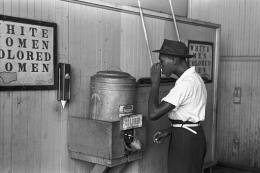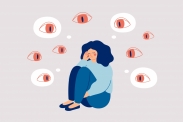latest articles
Diagnosed by AI – What our social media behavior reveals about our mental health

When mental illnesses are detected early and treated promptly, people affected tend to suffer less and have a better chance of recovery. Until now, identifying signs of mental illness in everyday life has required human expertise. Researchers are developing new approaches to automatically detect mental illness by using information from... / more
- written by Stella Wernicke, Stefanie Peykarjou & Letitia Parcalabescu
The unbearable heaviness of having an appearance: How society teaches us to judge our bodies

Why do so many of us, especially women, struggle to feel comfortable in our own bodies? This article explores how sociocultural pressures and social media shape body... / more
- written by Cristian Di Gesto, Amanda Nerini & Camilla Matera
Mastering Emotions: How Emotion Regulation Can Boost Your Athletic Performance

Imagine standing on a balance beam. Your heart races, your palms sweat—your body is primed for peak performance. Now comes the crucial decision: how will you steer your emotions? Will you let the tension paralyze you, or harness it as your driving force? Emotion regulation doesn’t mean avoiding fear; it means transforming it into focus and confidence. In... / more
- written by Mira Fauth-Bühler
- edited by Charikleia Lampraki
Plant-based, insect-based, or cultivated meat alternatives—Why do we (not) consume them?

Meat alternatives have become a fixture on supermarket shelves. While people have been consuming plant-based alternatives for a long time, the consumption of insects and, in the future, cultivated meat faces major challenges. What factors drive people to consume meat... / more
- written by Lena Szczepanski, Milan Büscher, Lene Strootmann & Florian Fiebelkorn
newsletter
Keep me updated about new In-Mind articles, blog entries and more.
most read articles
The good, the bad, and the ugly of the Dove Campaign for Real Beauty
The Dove Campaign for Real Beauty has been called a lot of things, from a “game changer” and “a breath of fresh air”, to “hypocritical”, “sexist”, and “sneaky”. So why has the campaign, whose major innovation was to use ads that featured real women rather than airbrushed models or celebrity spokespersons, sparked so much controversy? Taking... / more
- written by Angela Celebre & Ashley Waggoner Denton
- edited by Rosanna Guadagno & Reine van der Wal
That human touch that means so much: Exploring the tactile dimension of social life

Interpersonal touch is a fundamental but undervalued aspect of human nature. In the present article, the authors review psychological research showing that even fleeting forms of touch may have a powerful impact on our emotional and social functioning. Given its... / more
- written by Mandy Tjew A Sin & Sander Koole
- edited by Hans IJzerman
Intergroup Contact Theory: Past, Present, and Future

In the midst of racial segregation in the U.S.A and the ‘Jim Crow Laws’, Gordon Allport (1954) proposed one of the most important social psychological events of... / more
- written by Jim A. C. Everett
- edited by Diana Onu
No strings attached: Are “friends with benefits” as complicated in real life as they are in the movies?

Many people become “friends with benefits” to avoid drama and to have sex without getting tied up in emotions; however, the reality is that having a friend with benefits often becomes complicated. Why is that, and is there anything you can do to avoid these complexities? In... / more
- written by Justin J. Lehmiller
- edited by Dylan Selterman
InMind blog
Why Christmas (Feels Like It) Comes Faster Each Year

Christmas is just around the corner, and with it comes that familiar sense that time is speeding up. Do you feel the same way? In this blog post, you’ll... / more
Learning interdisciplinarity: The solution to societal challenges?
Anyone who has worked in a team knows the challenges: differing perspectives often clash. However, what happens when it’s not just opinions that diverge,... / more
Does emotional labor also exist in sex?
Emotional labor refers to suppressing or altering one’s own feelings in order to enhance another person’s well-being. But does... / more












